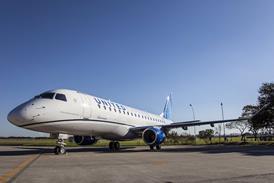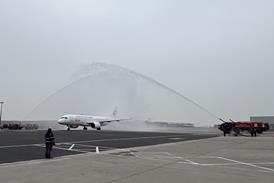The European Joint Aviation Authorities has acted to clear up any misunderstanding over Airbus A320 series thrust lever handling instructions. This follows the mass of technical discussion that emerged after the TAM A320 fatal overrun at São Paulo Congonhas airport in Brazil in July, which involved pilot mishandling of the levers. The JAA confirms there have been three occasions when crews have acted identically, contravening standard operating procedures, although only the TAM accident involved fatalities.
The JAA clarification has been released by the UK Civil Aviation Authority as a flight operations division communication (FODCOM), and it deals with handling A320 thrust levers during the flare and landing when one of the thrust reversers has been deactivated, and explains why the techniques are essential.
The manufacturer's operating instruction to pilots is that, at the flare, both thrust levers are to be manually retarded to idle, and the FODCOM confirms this as correct. At Conghonas and on two other occasions the crew left the power lever of the engine with a deactivated thrust reverser in the "climb" detent, which results in the autothrust remaining engaged.
The "climb" setting provides the full authority digital engine control with a speed mode command. In all three cases, the FODCOM says that "this resulted in the thrust increasing [on the engine with the thrust lever in 'climb'] to maintain the selected speed. When the autothrust disconnected, the thrust remained at the last commanded level per the lockout feature."
The FODCOM explains that the act of retarding both throttles to idle not only reduces engine power, but disconnects autothrust, arms the spoilers and activates the autobrakes. In all three cases, including Congonhas, says the FODCOM, "ground spoilers did not deploy and autobrakes, if selected, did not activate. The most recent accident [Congonhas] resulted in 199 fatalities."
Airbus is shortly to issue new wording in its published master minimum equipment list (MMEL) which says: "During thrust reversers application, select BOTH thrust levers," which is being introduced "to harmonise with the normal operating techniques when both reversers are serviceable, thereby minimising normal and MMEL dispatch procedural differences".
This is already standard for A330s and A340s, and the FODCOM suggests that A320 series operators might wish to incorporate the guidance in advance of the formal MMEL amendment.
Source: Flight International























